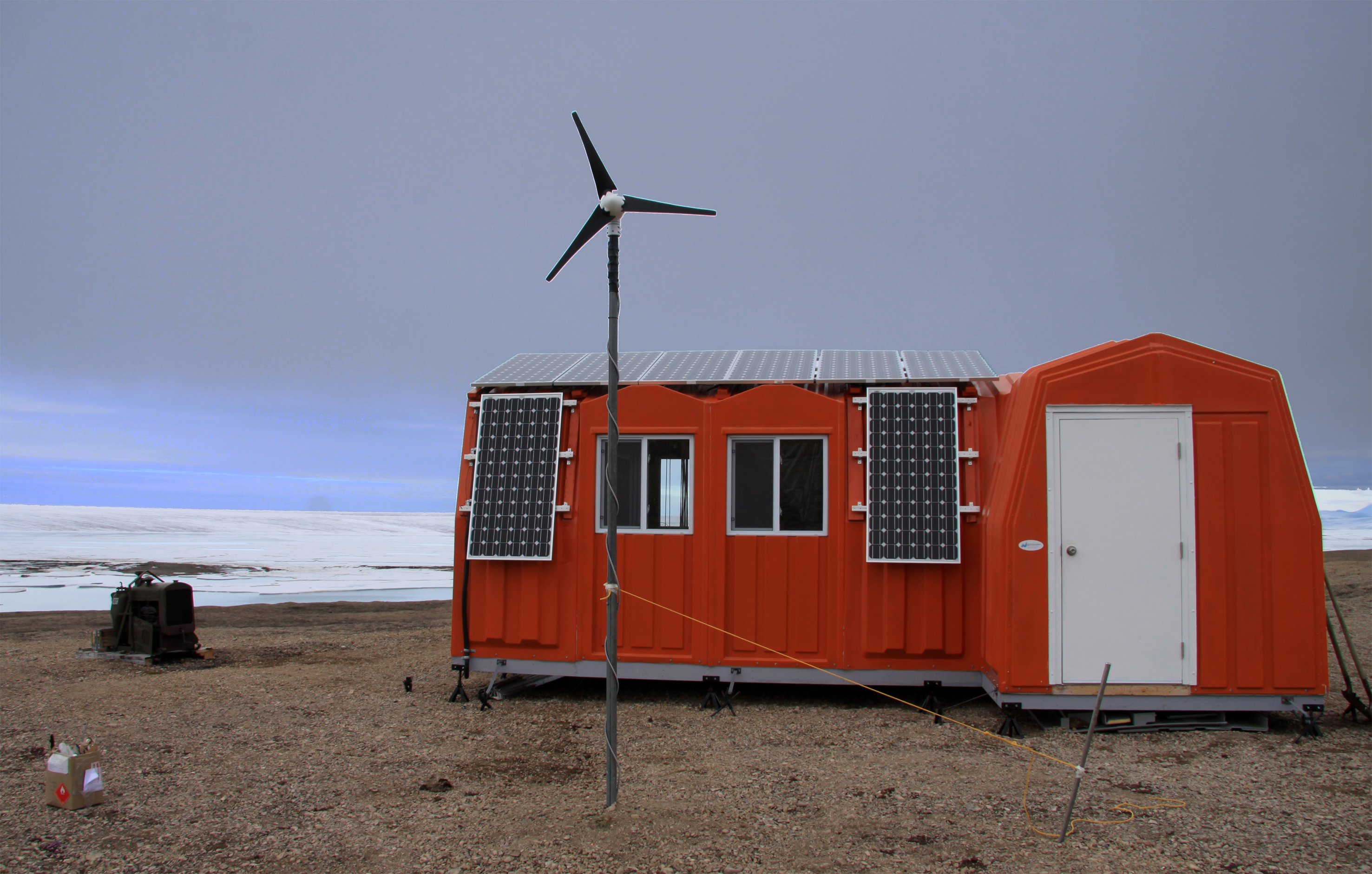CEN Ward Hunt Island Research Station

Address
Ward Hunt IslandQuttinirpaaq National Park
Nunavut
Canada
Station manager
Mickael LemayContact Station
http://www.cen.ulaval.ca/en/station.php?id=326&nm=wardhuntStation Features
Opening year: 1998 Status: OpenFacilities
Station name and owner
The CEN Ward Hunt Island Research Station is owned and run by the Centre d’études Nordiques (CEN: Centre for Northern Studies) in partnership with Parks Canada (www.pc.gc.ca/index.aspx).
Location
Ward Hunt Island is located at the northernmost tip of Canada, off the coast of northern Ellesmere Island and is part of Quttinirpaaq National Park, Nunavut, Canada (83°06’ N, 74°10’ W). Quttinirpaaq means “top of the world” in Inuktitut and reflects this station’s location, situated about 750 km from the North Pole.
Climate data
Grey colours are WMO Climate Normals including maximum and minimum values. Blue colours are individual years.
Climate data for the stations where extracted via Copernicus Climate Data Store, from the global gridded reanalysis product:
ERA5 monthly averaged data on single levels from 1940 to present.
Description and source code: Roemer J.K. 2023. https://doi.org/10.5281/zenodo.10214922
Data Source: Hersbach et al. 2023. Copernicus Climate Change Service (C3S) Climate Data Store (CDS), https://doi.org/10.24381/cds.f17050d7
Biodiversity and natural environment
This island in the high arctic is 6.5 km long (from east to west) and 3.3 km wide. The climate regime is typical of polar deserts, with dry and extremely cold temperatures (annual mean temperature of -17.3°C). The natural environment features lakes, ice shelves, fjords, epishelf lakes, ice caps and glaciers, sea ice, mountains, and valleys. The desert terrain has a low plant and animal diversity, but the region contains diverse microbial communities such as cyanobacterial mats that survive in these extreme environments. An overview of past studies in this region is given in: Vincent, W.F., et al. 2011: Extreme ecosystems and geosystems in the Canadian High Arctic: Ward Hunt Island and vicinity (Ecoscience 18: 236-261).
History and facilities
The first known sighting was in 1876 by Pelham Aldrich, a lieutenant with the George Nares expedition, and named for George Ward Hunt, First Lord of the Admiralty (1874-1877). Ward Hunt Island was briefly used as a weather station during the International Geophysical Year of 1957-58, and since then it has been used as the starting point for a number of attempts to reach the North Pole, beginning with Ralph Plaisted in 1968. Scientists have been working at the station since the 1950s. Parks Canada has three Weatherhaven shelters with oil burner furnaces, each can host 12 people for sleeping. CEN operates three automated, year-round climate stations of SILA Network in the region. A laboratory made of insulated fiberglass and powered by solar panels was built in 2010 thanks to a federal infrastructure grant.
General research and databases
Main research fields comprise the structure and functioning of lake and river ecosystems at high latitudes, dynamics of northern ice shelves, microbial ecology, geomorphology of polar desert landscapes, impacts of UV radiation, and Climate Change on aquatic ecosystems. Extensive climate data records are available on the Nordicana D: www.cen.ulaval.ca/nordicanad/. For requests concerning ecological monitoring data, please contact the leading researcher, Warwick Vincent (warwick.vincent@bio.ulaval.ca).
Station Monitoring
Human dimension
No communities live on Ward Hunt Island. The nearest community is Grise Fjord, located 800 km away on southern Ellesmere Island. Grise Fjord, (Inuktitut: Aujuittuq, “place that never thaws”; Inuktitut syllabics: ) is a small Inuit hamlet in the Qikiqtaaluk Region in the territory of Nunavut, Canada. With a population of 141 residents (as of the Canada 2006 Census), it is the only Inuit community on Ellesmere Island. It is also one of the coldest inhabited places in the world, with an average yearly temperature of -16.5°C. Grise Fjord lies 1160 km north of the Arctic Circle in the Arctic Cordillera mountain range which is the only major mountain system east of the Canadian Rockies. The Canadian military base Alert is 170 km to the East and slightly to the South of Ward Hunt Island.
Access
Given that this is an extremely isolated station in a national park, all research activities must be planned and proposed at least one year in advance. Contact CEN for more information (cen@cen.ulaval.ca). For information on access and permits, contact Quttinirpaaq Park Manager (www.pc.gc.ca/pn-np/nu/quttinirpaaq/plan.aspx) and the Polar Continental Shelf Project (PCSP) for appropriate application forms to access the site via chartered flights (http://polar.nrcan.gc.ca/).

